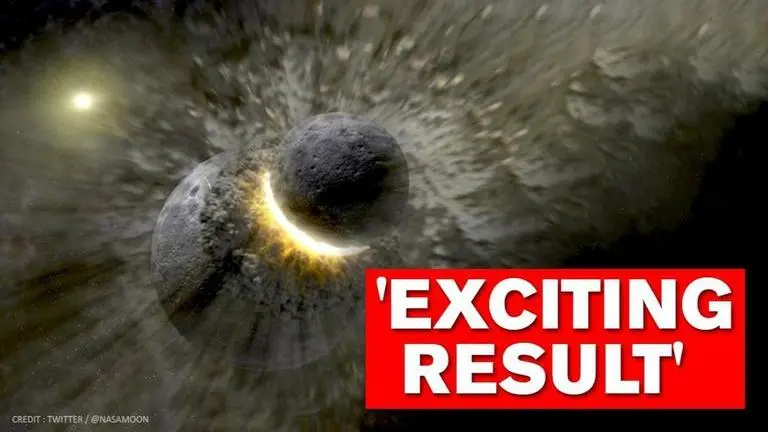Updated 4 July 2020 at 16:51 IST
NASA findings suggest more metal on Moon than thought, could aid lunar formation theories
New findings from Lunar Reconnaissance Orbiter, NASA’s robotic spacecraft, have indicated to the evidence of a higher amount of metal than earlier thought.
- Science News
- 2 min read

For a long time, it has been considered that Moon was formed as a result of a collision between a Mars-sized protoplanet and young Earth, leading to a chemical composition that closely resembles Earth. However, new findings from Lunar Reconnaissance Orbiter, NASA’s robotic spacecraft, have evidence of a higher amount of metal than earlier thought.
The rocks from the bright plains of the Moon’s surface contain a smaller amount of metal-bearing minerals compared to Earth which indicates the impact with the protoplanet occurred after Earth had fully differentiated into a core, mantle, and crust. But the large, darker plains of Moon, called maria, have richer metal-bearing minerals than many rocks on Earth.
The discrepancy in the metal amount has led to numerous questions and hypotheses and left scientists wondering how much the protoplanet may have contributed to it. According to NASA, the Mini-RF team, which maps the lunar poles and searches for water ice, found a curious pattern that could lead to an answer.
Advertisement
The researchers sought to measure dielectric constant, a number that compares the relative abilities of material and the vacuum of space to transmit the electric field, within lunar soil piled on crater floors in the Moon’s northern hemisphere. The team observed that the dielectric constant increased with the size of the crater. NASA said that for craters approximately 2 to 5 kilometres wide, the dielectric constant of the material steadily increased as the craters grew larger. On the other hand, the property remained constant for craters 5 to 20 kilometres wide.
'Exciting result'
Since dielectric properties are directly linked to the concentration of these metal minerals, researchers argued that the increasing dielectric constant of the dust in larger craters could be the result of meteors excavating iron and titanium oxides that lie below the surface. If the hypothesis is to be believed, only the first few hundred meters of the Moon’s surface is scant in iron and titanium oxides and there’s a steady increase in the metal amount below the surface.
Advertisement
“This exciting result from Mini-RF shows that even after 11 years in operation at the Moon, we are still making new discoveries about the ancient history of our nearest neighbor,” Noah Petro, the LRO project scientist at NASA’s Goddard Space Flight Center in Greenbelt, said in a statement.
Published By : Kunal Gaurav
Published On: 4 July 2020 at 16:51 IST
